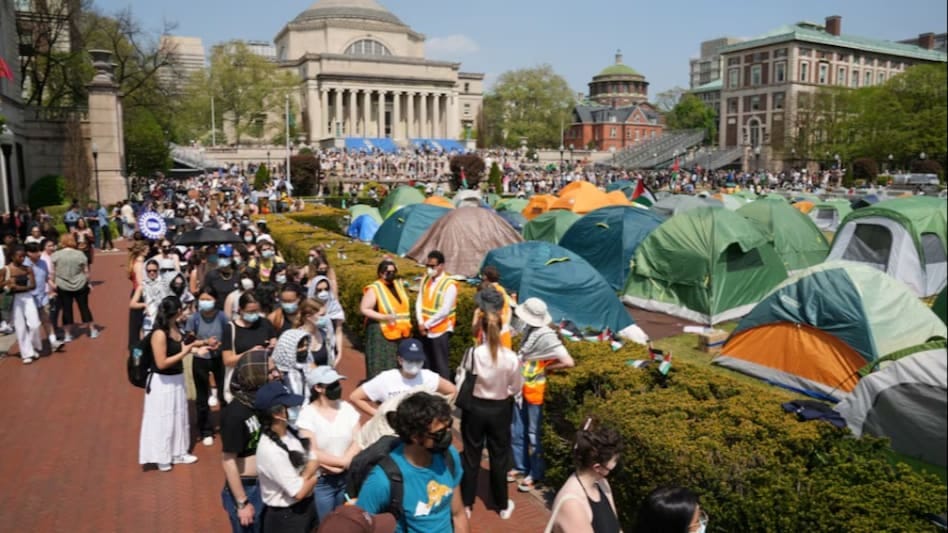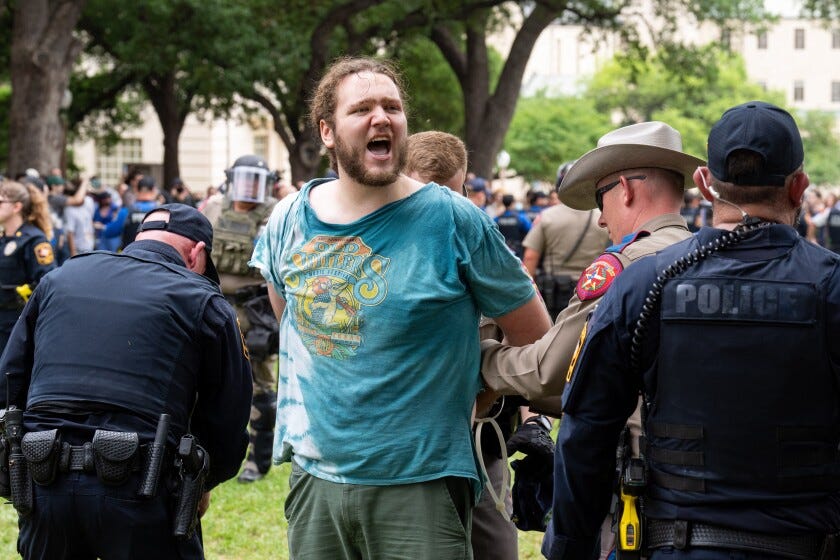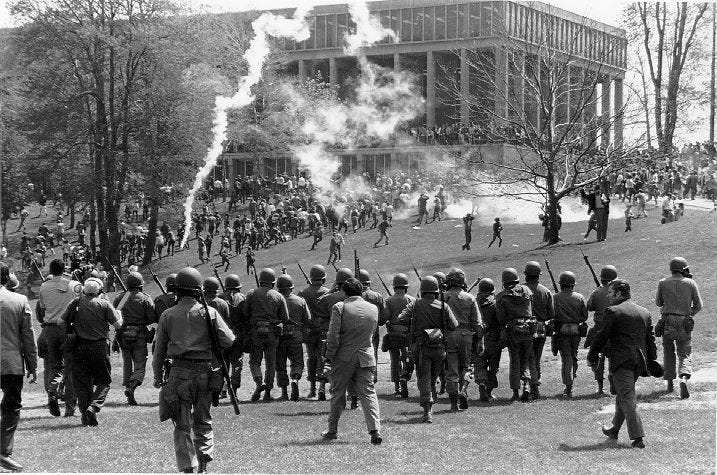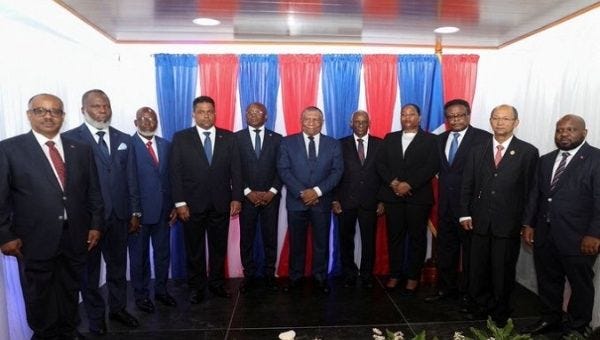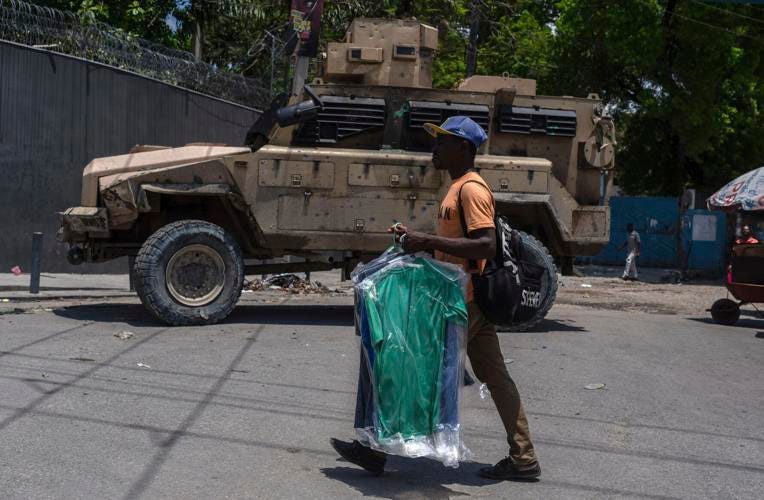Note from Lethal Minds:
Bulletin From The Borderlands is a joint project between Lethal Minds and some of the most talented OSINT analysts and independent journalists working today. Our goal is to provide you with a clear, accurate, and informative view of the world, free from censorship or bias. The Bulletin will bring you the facts, our analysis, and our evidence. We hope you find our work helps you better understand the complicated and increasingly volatile world in which we live.
Be informed, be prepared, be lethal.
The Bulletin Team:
Analyze Educate : Brodie Kirkpatrick (Analyze & Educate) is a Marine Corps infantry veteran. He is a graduate San Jose State University with a Bachelor’s Degree in Political Science. He runs Analyze & Educate, a podcast and associated social media pages discussing geopolitics, armed conflicts, news, and history. In his capacity with Lethal Minds he is the team lead for the Bulletin From the Borderlands, Americas Desk chief, and an editor.
The Expeditionary Intelligence Group : The Expeditionary Intelligence Group Instagram page is a project delivering flash news utilizing open-source intelligence combined with human asset contributions and geographic intelligence to provide the general public with objective bias-free global news that tells the whole story based on the facts and on-the-ground insights they feel are missing from a lot of mainstream news reporting.
The Defense Bulletin: Defense Bulletin is run by John M Larrier. As a civilian, I’ve closely followed strategic developments for close to a decade, but “launched” the Bulletin during the pullout in Afghanistan due to the extreme nature of the misinformation I saw my peers as well as others reading into. The lacuna that the general populace has about these now very prevalent subjects is the stated goal for Defense Bulletin
Robert “Bobby” Acuña is a graduate of Texas A&M University – Corpus Christi with both a BBA in Economics and a BA in Political Science. He was originally born in Subic Bay, Philippines but lived much of his life in Corpus Christi, Texas. He currently resides in Houston, Texas. Growing up in a military family, Robert developed a passion for politics as well as studying war history. Some of his earliest memories were watching World War II documentaries with his grandfather. This led him to his educational path in university. One of his favorite aspects of his collegiate career was political research. His most recent work was with The Modern Insurgent. He believes Bulletin On The Borderlands will help to fulfill that urge to understand and stay consistently aware of the geopolitical issues around the world. Outside of his interest in global affairs, Robert is an avid Brazilian Jiu Jitsu practitioner and rugby player.
ALCON S2: A veteran of the New Zealand military intelligence community, if it walks, talks, or crawls in Asia, ALCON S2 knows about it. Cole is the preeminent source of OSINT for the Oceania and South East Asia region.
Jillian Butler: A lifelong writer and San Diego native. She received her bachelor’s degree in English and History at the University of Ulster in Northern Ireland. Upon moving back to San Diego, she received her master’s in International Relations at the University of San Diego where she centered her research around jihadi terror. She is also a contributing writer for Pop Smoke Media, American Grit, The Modern Insurgent, and Lethal Minds Journal’s Bulletin from the Borderlands. In her free time, she can be found surfing, training jiu jitsu, or improving her craft of cooking the perfect ribeye.
Sponsors
The Bulletin is brought you to by PB Abbate.
As you likely know, Lethal Minds Journal shares common ancestry with Patrol Base Abbate, one of the most impactful veteran’s outreach organizations in America. One of the ways in which we connect is through a love of the written word, a belief in the power of good writing to help give a voice to people who need to be heard, and a desire to help service members and vets connect through self-expression.
In This Issue:
The Americas : Covered in this issue by Brodie Kirkpatrick (Analyze & Educate), Robert Acuña.
Across the United States, large sit-in protests have broken out and escalated around the country. As the Israel-Hamas War drags on and Israel prepares to assault Rafah, pro-Palestine groups have shut down entire campuses and clashed with law enforcement. These demonstrations have drawn comparisons to well known student protests from the Cold War era. In Haiti, the new transitional council has taken power and will lead the nation for the next two years. It has a lot of issues to address before elections are held in 2026.
Europe : Covered in this issue by Brodie Kirkpatrick (Analyze & Educate), John Larrier, and Jillian Butler.
The situation on the “zero line” continues to deteriorate for Ukraine. As we predicted last month, the Russians have been able to capitalize on a recent breakthrough to the west of Avdiivka, Donetsk Oblast. The implications of this breakthrough could prove dire for Ukrainian forces in the east. In Germany, a string of recent espionage arrests have drawn attention to the right-wing Alternative for Germany party. At least two registered members of the party are accused of spying for Russia and China. Elsewhere in Europe, two major NATO countries, France and Poland, have signaled their support of nuclear deterrence to protect the alliance from the Russian Federation.
East Asia and Oceania: Covered in this issue by John M. Larrier (Defense Bulletin).
The Multilateral exercise, Balikatan 2024 is underway. The exercise, involving the Armed Forces of the Philippines (AFP), the U.S. military, the Australian Defense Force (ADF), and the French Navy, has been heavily surveilled by China. The exercise, specifically a live fire drill, was also disrupted by the Chinese surveillance vessel, the Tianwangxing.
In an overview of the ongoing conflict in Myanmar. We touch on the opening of the conflict in 2021, with the coup that drastically escalated the conflict in the country and put a military junta in power. Opposition actors have since formed a shadow government and fighting force, but multiple actors hold sway over different regions inside the nation. Making the ongoing civil war an extremely complex conflict.
Central Asia and the Middle East: Covered in this issue by Eric Sheppler, John Larrier, and Jillian Butler.
A new CNN investigation using a publicly released GoPro recording has contradicted the Pentagon’s investigation into the Kabul airport suicide bombing in 2021. Another American MQ-9 Reaper drone was shot down by the Houthis. The first part of Iran’s new strategic outlook and an intelligence summary of recent Hezbollah actions in the region.
Africa: Covered in this issue by Expeditionary Intelligence and Jillian Butler.
We explore the recent passing of the UK-Rwanda bill that would send those seeking asylum to the UK to Rwanda for processing as well as an operation that resulted in the death of a senior ISIS leader in Mali. Both of these events signal large geopolitical developments in Africa. The articles in this month’s issue shine a light on growing foreign influence in Africa while exploring the implications of that influence on local populations.
The Highlight: Hezbollah Operations in the Middle East
An intel summary highlighting Hezbollah's operations in the Middle East. Implications and forecasting included.
The Americas
Brodie Kirkpatrick, Bobby Acũna
Student Protests at U.S. Universities
The Israeli-Hamas War is moving into its sixth month and again beginning to intensify as the Israeli Defense Forces (IDF) moves into Rafah. Throughout this conflict various forms of protest have been sparking up, from marches, to protests at the Israeli embassy, and infamously the self-immolation of Aaron Bushnell. In the most recent protest strategy, various pro-Palestinian student groups have united to create protest encampments on universities throughout the U.S. These student-led protests roughly range from one hundred or more students (and some faculty) have begun to form at universities all over the United States. Many of these organized protests consist of encampments in which students are setting up tents and camping in very public locations in the prospective universities. Each of these encampments have proposed various anti-Israeli demands and state that they will occupy these encampments until their demands are met.
Where Did These Protests Begin?
These protests first formed at Columbia University on April 17th after Dr. Memat Shafik, the President of Columbia University, attended a congressional committee hearing in Washington DC. Various university presidents and leaders of higher education have been periodically called into hearings to talk about the growing pro-Palestine protest movement and rise of antisemitism at their universities, and how they will handle the rising tension. Dr. Shafik and other Columbia leaders vowed to put an end to the growing tension and protests that have been ongoing at the university, which members of Congress applauded. Shortly after the hearing, the encampment began to form at the university. Dr. Shafik and other leaders called the police a day after the encampment was formed, resulting in over 100 arrests. This only galvanized the protesters which have grown in numbers and continue to inhabit the encampment.
Who is Coordinating?
The protest at Columbia University has been coordinated by a coalition of various pro-Palestinian student groups such as Jewish Voices for Peace (JVP), Students for Justice in Palestine (SJP), Boycott Divestment Sanctions (BDS), smaller local pro-Palestine groups, some Islamic student groups, and a variety of leftist organizations. JVP, SJP, and BDS all have chapters across the nation, which has helped prompt chapters at universities nationwide to begin their own encampment protests. Leaders of these protests claim that they condemn any violent action towards pro-Israel counter protestors, as well as Jewish students on campus. Although, on the ground footage seen on social media has shown members of these encampment protests shouting antisemitic slogans as well as praise for organizations such as Hamas and Hezbollah.
What are the Protesters Demanding?
The encampment protesters across the nation are demanding that their universities divest from companies and weapon manufacturers that support the state of Israel. They want their universities to cut academic ties with Israeli universities and the Israeli government. Additionally, they want the U.S. military to cease its assistance to the Israeli military. They want U.S. weapons manufacturers to cease their sales of weapons and other equipment to Israel. They want amnesty from repercussions for participating students and faculty. Lastly, the protesters demand a permanent ceasefire in Gaza.
Nationwide Reaction
As the events within Columbia University continued to unfold, many other campuses followed suit and began their own encampment protests. Numbers vary for the number of universities who are partaking in the encampment protests. NBC News states that more than 40 universities within the U.S. and Canada are affected by these demonstrations. Directly after arrests began at Columbia University, an encampment protest ignited at nearby New York University, resulting in 133 arrests. At Yale University, an encampment protest refused to disperse, resulting in 60 arrests. Students at the University of Texas in Austin formed their own protest and were met by law enforcement who demanded it be dispersed. Students began to clash with officers, resulting in 50 arrests. At Emory University in Atlanta, law enforcement arrested 24 students after reports of vandalism from non-students who joined the protest on university grounds. At the University of Southern California, encampment protests along with the canceled pro-Palestinian graduation speech by valedictorian Asna Tabassum prompted USC leadership to cancel this semester’s graduation ceremony. Many universities, Columbia University being one of them, have canceled all in person classes for the remainder of the semester due to fears of safety. As the tensions increase and the encampments begin to grow, many believe escalated force might be taken by law enforcement at universities across the nation.
The History of University Protests
It’s interesting to note that Columbia University is no stranger to large scale anti-war protests. In 1968, Columbia was the battleground of a civil rights and Vietnam War protest that lasted from April 23rd, 1968, until April 30th, 1968. The protests were led by two student organizations, Student Afro Society and Students for a Democratic Future. The students were angered by the university construction of a gym at nearby Morningside Park which would displace a black community living in that area. The students also demanded that the university sever ties with weapons manufacturing companies which were using university research for weapons used in Vietnam. The protests began with members of both organizations taking down the fencing around the proposed gym construction site. Students then swiftly moved on to take over university buildings all over campus. Eventually, five university buildings were taken over by students and a dean, Henry Coleman, was taken hostage. The university called the NYPD after the seventh day, resulting in 712 arrests and 148 injuries. The result was the cancellation of the gym construction, Columbia cutting ties with defense companies, and the end of military recruitment on campus.
Another notable protest that had occurred was at Kent State University on May 4th, 1970. Kent State, along with many universities across the nation, held anti-war protests over the Vietnam War in late April due to President Nixon’s speech about the widening of the war by invading nearby Cambodia, which he claimed was aiding the Viet Cong. On May 1st, demonstrations occurred on campus with various speakers denouncing the war. Reports of rioting occurred that evening within Kent, Ohio in which police used less-than-lethal force as well as tear gas to disperse the crowds. The following day on May 2nd, the Ohio National Guard was called on to campus as an ROTC building was set on fire. The Ohio Governor, James Rhodes, declared a state of emergency and stated that all rallies and protests were banned. On May 3rd, clashes between National Guardsmen and students ensued. Witnesses reported that rocks and bottles were thrown at the National Guardsmen, who responded with tear gas and arrests. On May 4th, the clashes began to intensify. Some believe that the increased rock throwing prompted the National Guardsmen to open fire. The result was four students dead and nine injured by gunfire.
Resolutions to the Protests
As of now, there appears to be no formal resolutions to the protests. Each established protest appears to be growing, especially when met with harsh actions from law enforcement. Currently, we are not seeing the protests escalate to the extent we have seen in past decades, but they are not deescalating either. With the power of social media and the various chapters of groups such as JVP and SJP on campuses nationwide, we are seeing encampments form at more universities. At the University of Texas in Austin, the Austin Police Department broke up a large contingent of protestors using tear gas as they attempted to push police off campus grounds. At Columbia University, Columbia leaders have attempted to negotiate with the protestors, although talks have fallen through. In further escalation, protestors at Columbia broke into Hamilton Hall on the morning of April 30th, 2024. The protestors occupied the building armed with zip ties and objects to create barricades. Many believe this is a nod to the anti-Vietnam War protest in 1968, in which the same action was done. This was done in reaction to the university vowing to expel individuals who were arrested at the ongoing encampment protest. University leaders, troubled by the escalated actions and vowing to put an end to the protest, called on the NYPD riot police to take back Hamilton Hall and to put an end to the protests for good. NYPD used a form of a crane type vehicle to get officers access to the building from a window. Police have swept through each floor and arrested protestors as they apprehended them. Bassem Naim, a senior spokesperson for Hamas, has announced the organization’s support for the protests. White House Deputy Press Secretary, Andrew Bates, responded by denouncing Hamas as a terror organization, calling them “… the least credible voice that exists on this subject”.
A New Day in Port-au-Prince
Haiti has officially entered a new era with the swearing in of a new Transitional Presidential Council in Port-au-Prince. For the next two years, the council will run the country and prepare it for elections in February 2026. Until then, the nine-member council has a lot of work to do.
Making the Transition
Since the announcement of the body in early-April, the councilors were adamant on being sworn in at the National Palace in front of 400 guests. The former presidential residence is a shell of itself. The palace was heavily damaged in the 2010 earthquake and has still not been fully rebuilt. Additionally, holding a ceremony at the palace carried major security risks. Since the gang campaign against the government began in late-February, the palace has been under attack from armed criminals nearly daily. National Police officers and palace guards are routinely forced to fight off assault from gangs targeting the palace’s administrative offices. The palace was even attacked on April 22nd, when a delegation for the council visited the residence to plan for the ceremony.
Regardless of the risks, on April 28th, the council was sworn in at the National Palace. During the two part ceremony, sustained gunfire and a large police presence was recorded at Champ-de-Mars park, less than a mile away from the palace. Once the council was sworn in, the resignation of now-former Prime Minister Ariel Henry went into effect. The nine-member council (in which only seven have voting powers) is now the governing authority in Haiti.
Down to Business
The council has voted for former Senate President Edgard Leblanc Fils to be its president. To be clear, this is not the role of President of Haiti, but President of the Transitional Presidential Council. The president is a ceremonial role and his vote counts no more or less than the other six voting members of the council. On Tuesday, at Fils urging, the council appointed former Sports Minister Fritz Belizaire to serve as the new prime minister. Belizaire is not well known among Haitians, including some members of the council who said that they were not previously familiar with him.
The council will have to address many issues the everyday Haitians face, such as food and water insecurity, economic issues, and corruption. Of course, one of the major issues the council will also have to deal with is gang violence. Despite Henry leaving office, Haiti’s major gang coalition, Viv Ansanm (Live Together), doesn’t appear to be standing down. The coalition’s leader, Jimmy “Barbeque” Cherizier, said on social media, “Viv Ansanm is ready to talk. It’s either we are all at the table, or the table gets destroyed with all of us”. With a public statement like that, one can only assume that the widespread violence around Port-au-Prince will only increase.
Looking Forward
The situation at Columbia University will drive the wider protest movement in one direction or another. New York City police recapturing Hamilton Hall on the campus last night could inflame the protests instead of causing them to disperse. De-escalation of tensions between protesters and university faculty depends, to an extent, on the ability of universities to separate student protesters and unaffiliated persons. For Haiti, many Haitians are skeptical of the council’s ability and/or motivation to actually improve the country. Thus far, all that has been done is the filling of some leadership roles, which has been somewhat of a painful process already. It is too early to tell if the Transitional Presidential Council will be a positive for Haiti, or another political disappointment.
Keep reading with a 7-day free trial
Subscribe to Lethal Minds to keep reading this post and get 7 days of free access to the full post archives.





